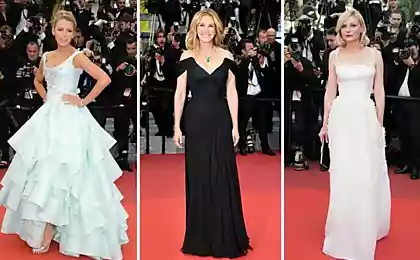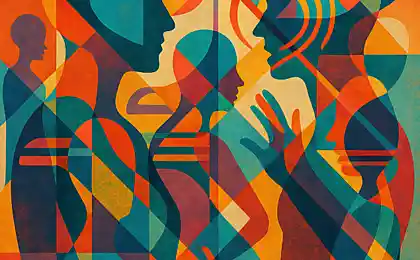347
Secret Body Signals: What Do Our Habits Say?

Every day we make many gestures and actions without thinking about them. However, these small habits can tell us more about us than we think. Body language is a powerful communication tool that affects how we are perceived by others. Understanding nonverbal cues can help you better understand others and interact with them more effectively.

The Unexpected Significance of Everyday Gestures
Many gestures that we consider insignificant can have hidden meanings:
- Crossed arms on the chest: It is often seen as a sign of a closed or defensive position. The person may feel uncomfortable or disagree with what is happening.
- Foot tapping: signals impatience, anxiety or irritation.
- Touching the face: Touching the nose, lips, or chin may indicate that the person is doubtful or not telling the whole truth.
- Head tilt: Shows interest and attention to the interlocutor. It is a gesture of trust and openness.
- Raised eyebrows: It can mean surprise, doubt, or questioning.
“Our body says things that sometimes words cannot say. By understanding nonverbal signals, we can better understand others and ourselves, notes nonverbal communication expert Irina Smirnova.

What a position in a dream will tell about the character
Even in our sleep, our body continues to communicate. The position in which we sleep can provide clues about our inner world.
- Embryo posture (curled up): This indicates a desire for protection and security. Such people can be sensitive and emotional.
- On his back with his arms and legs spread out: It speaks of confidence and openness. A person feels comfortable in the surrounding world.
- On my stomach: It may indicate perfectionism and a controlling nature. People like to keep things under control.
- On the side with straight legs: It is characterized by calm and reliable people who are prone to compromise.
Of course, the pose in a dream is not the only indicator of character, but it can give interesting insights about our emotional state.
How to read the body language of the interlocutor
Understanding nonverbal signals can greatly improve communication. Here are some key points worth paying attention to:
- Eye contact: A direct look usually means interest and attention. Avoiding looking may indicate discomfort or a desire to hide something.
- Body position: The tilt towards the interlocutor indicates interest, the deviation back - about distance.
- Hand gestures: Open palms show honesty and openness, hidden hands can signal secrecy.
- Micro facial expressions: Short-term changes in facial expression can reveal true emotions, even if the person tries to hide them.
- Tone of voice and speed of speech: Increased voice and rapid speech may indicate excitement or nervousness.
Expert advice:
When communicating, pay attention to the set of signals. One gesture can have different meanings depending on the context. Always consider the situation and cultural characteristics of the interlocutor.
Simple ways to get people around you through nonverbal cues
Using body language consciously, you can create a positive impression and establish a trusting relationship.
- Smile sincerely: A smile is a universal signal of friendliness and openness.
- Maintain visual contact: This shows your interest and respect for the interlocutor.
- Mirror the pose of the interlocutor: Soft copying of gestures and postures helps establish rapport and mutual understanding.
- Hold open positions: Avoid crossing your arms and legs, which makes you more accessible.
- Nod during the hearing: It shows your attention and encourages the other person to keep talking.
“Non-verbal cues often speak louder than words. Conscious use of body language can help you better understand others and be understood, stresses psychologist Alexander Ivanov.
Conclusion
Body language is a powerful tool that we use daily, often without realizing it. Understanding and controlling nonverbal cues can significantly improve communication quality, help establish trusting relationships, and even affect professional success. Start paying attention to your gestures and habits today, and you will be amazed at how your interaction with the world will change.
The hidden power of smells: how fragrances control our lives
Lost technology of the ancients: what are we still surprised by?























